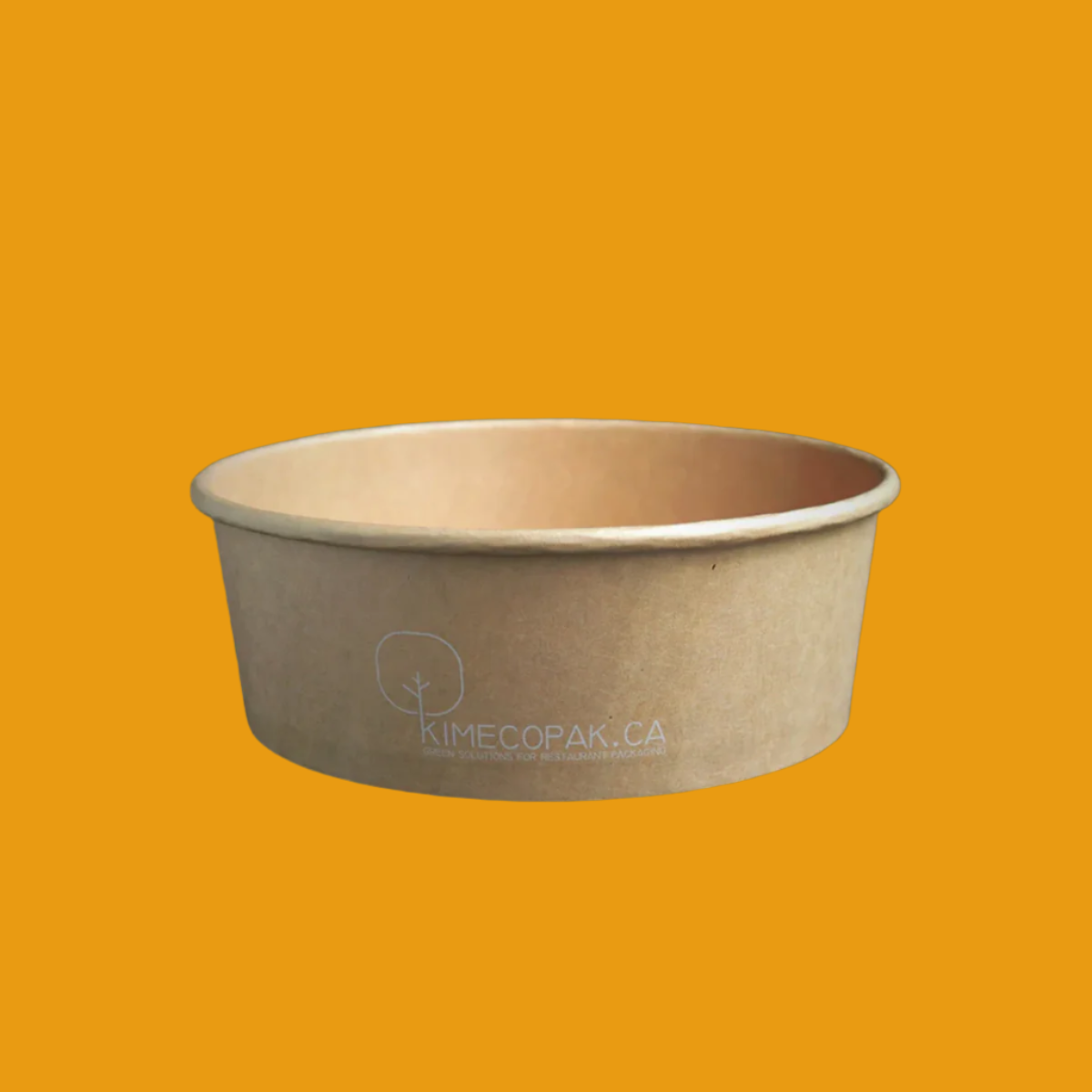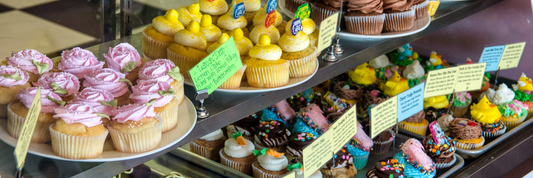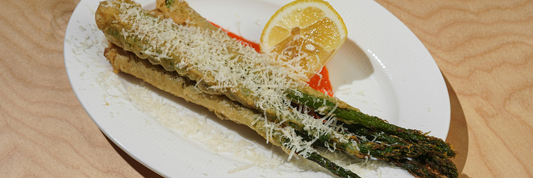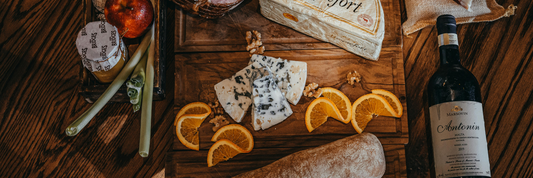Running a restaurant or café in Canada in 2025 is tough—ingredient costs are rising, it’s hard to find and keep staff, and customer expectations keep changing. To stay profitable, you need to act fast and adapt. That’s why a mid-year reset is not just helpful—it’s necessary.
At KimEcopak, we’ve worked with over 300 restaurants and food businesses across Canada, helping them cut costs, improve operations, and grow with smart packaging and practical advice. This restaurant survival & success checklist is built from real challenges and proven solutions—so you can finish 2025 strong and set your business up for a more profitable, stable 2026.
Review Your YTD Performance
Before planning your next move, take a step back and assess how your restaurant has performed so far in 2025. A mid-year audit helps you identify what’s working, what’s dragging down profits, and where to focus your energy in the second half of the year.

Dive Into Your POS Data
Start with the numbers. Your POS system is a goldmine of operational insights if you know what to look for. Key metrics to analyze include:
-
Top-selling menu items: Double down on what’s popular, especially high-margin dishes.
-
Low performers: Flag any items that rarely sell or require high prep cost.
-
Daypart trends: Identify your slowest days or times (e.g., Monday lunch, Sunday dinner) and consider targeted promos or staffing adjustments.
-
Staff performance: Evaluate sales per employee, average order value, and upsell success rates.
If you use systems like Square, Lightspeed, or TouchBistro, you likely have access to visual dashboards and automated reports. These tools make it easy to compare month-over-month trends or set benchmarks by location if you operate multiple outlets.
Analyze Profitability
Revenue is only part of the story—profitability tells you what’s actually making your business sustainable. Go beyond sales and evaluate:
-
Cost of goods sold (COGS) and food waste levels
-
Labor cost as a percentage of sales
-
Net profit margins by menu item
-
Average check size and table turnover rate
Identify which offerings are profitable crowd-pleasers, and which might need to be reworked or retired. This sets the foundation for your upcoming seasonal menu refresh.
Review Customer Feedback
Online reviews are more than reputation—they’re feedback loops. Scan:
-
Google, Yelp, and TripAdvisor for trends in what guests love or complain about.
-
Customer feedback surveys, comment cards, or even DMs on social media.
Look for patterns. Are people raving about your brunch but complaining about slow service during dinner? Is there confusion with online ordering or delivery packaging? Combine this qualitative data with your POS insights for a 360° operational view.
Tool Tip: POS Dashboards That Help
Platforms like:
-
Square: Offers item-level sales tracking and labor vs. sales comparisons.
-
Lightspeed: Great for multi-location operators with real-time performance reporting.
-
TouchBistro: Strong focus on menu engineering and staff performance analytics.
Use these to build monthly performance snapshots or year-to-date comparison charts that inform your Q4 planning.
Refresh Your Menu Based on Data & Season
Your menu is more than a list of dishes—it’s one of the most powerful business levers you have. A strategic mid-year refresh, especially going into fall, can reinvigorate interest, improve margins, and better align with what today’s guests are craving.
Remove Underperforming Dishes
First, take a hard look at your menu performance metrics. Which items:
-
Sell infrequently?
-
Have low profit margins?
-
Require ingredients that frequently go to waste?
-
Take too long to prepare or cause bottlenecks in the kitchen?
Use this data to trim your offerings and streamline operations. A leaner menu doesn’t just reduce costs—it actually boosts decision-making and improves order speed. Aim to keep your top 80% of sales drivers and phase out what’s holding your kitchen back.
Highlight Local, Seasonal Ingredients
Seasonal ingredients are a win-win:
-
Lower cost due to peak harvest availability
-
Fresh taste that resonates with food-conscious diners
-
Marketing appeal (“farm-to-table,” “autumn harvest,” “locally grown”)
For fall, consider incorporating:
-
Butternut squash, root vegetables, apples, pears
-
Warm spices like cinnamon, nutmeg, or cardamom
-
Hearty grains or legumes for added texture and nutrition
If you can, name-drop local farms or suppliers on your menu—it builds trust and shows community support.

Meet Evolving Customer Preferences
Consumer demand is shifting fast. Diners—especially millennials and Gen Z—are increasingly:
-
Reducing meat consumption
-
Seeking high-protein or fiber-rich meals
-
Looking for allergen-friendly or gluten-free alternatives
Test adding:
-
Plant-based proteins like tempeh, tofu, lentils, or jackfruit
-
Protein-rich options using quinoa, edamame, chicken thighs (cost-effective)
-
Low-carb swaps like zucchini noodles or cauliflower rice
Even one or two creative additions in this direction can help you tap into new audiences or increase frequency with existing ones.
Action Step: Launch a Seasonal Menu Campaign
Turn your menu update into a customer engagement moment:
-
Announce a Fall Menu Launch Week with sneak peeks on Instagram
-
Offer limited-time pricing or a free add-on (e.g. seasonal soup with entrée)
-
Collaborate with local food influencers for a tasting preview
This gives regulars a reason to return—and new customers a reason to try you now.
How to Write a Restaurant Business Plan That Actually Works
Boost Your Online Presence
In today’s restaurant landscape, your digital storefront is just as important as your physical one. As guests increasingly rely on search, social, and reviews to decide where to eat, a strong, up-to-date online presence directly impacts foot traffic and reservations.
Update Your Listings & Bios
Start by cleaning up your key online platforms:
-
Google Business Profile (formerly Google My Business): Ensure your hours, phone number, and website are correct. Add your fall hours, any closures, or updated reservation links.
-
TripAdvisor & Yelp: Refresh your business description to highlight what’s new, seasonal, or unique. Monitor and respond to recent reviews to show active engagement.
-
Social Media Bios: Include current links to your online ordering or reservations, and make sure your “About” section speaks to your latest concept (e.g., “Serving locally inspired fall dishes in the heart of Toronto”).
Refresh Your Visuals
Images are often the first impression. Replace outdated summer photos with seasonal shots featuring:
-
Cozy fall-themed décor (warm tones, candles, wood textures)
-
Signature dishes with autumn ingredients
-
Behind-the-scenes kitchen prep or latte art with cinnamon and spice
High-quality, authentic photos build trust and appetite—especially when featured in your Google listing or social feed.
Campaign Idea: “Back to Routine”
As customers transition from summer holidays back to work and school, launch a “Back to Routine” Instagram campaign:
-
Promote weekday lunch specials or takeout bundles
-
Offer coffee loyalty promos for the morning rush
-
Highlight comforting, nourishing dishes perfect for cooler weather
Use Instagram Reels or Stories to feature new menu items, staff shout-outs, or time-limited offers. Pair with hashtags like #FallEatsCanada or #BackToRoutineBites.
Plan for Key Dates & Holidays
From September to December, the calendar is full of high-impact opportunities to drive traffic and boost average order value. Smart seasonal planning gives you a competitive edge and ensures you're not scrambling last minute.
Back-to-School (Early September)
As families and professionals return to routine:
-
Launch family meal kits, kid-friendly menus, or grab-and-go breakfast items
-
Offer “after-school snack hour” or student discounts to attract teens and college crowds
-
Re-engage regulars with loyalty program bonuses for weekday visits
Thanksgiving – October 13
Canadians celebrate Thanksgiving earlier than Americans, giving you a chance to stand out:
-
Offer a Thanksgiving pre-order meal kit or limited-time festive menu (think turkey sliders, pumpkin soup, apple desserts)
-
Host a “Friendsgiving” event with group discounts or community-style dining
-
Promote takeout/delivery bundles for those not hosting at home

Halloween
Get creative with fun, low-cost ideas that can attract families or themed-party crowds:
-
Offer spooky-themed drinks, desserts, or kids’ meals
-
Host a costume contest night or “Kids Eat Free in Costume” promo
-
Decorate your storefront for photo ops and taggable moments on social media
Holiday Season (Nov–Dec)
This is prime time for both dine-in and catering:
-
Create corporate catering packages and promote early-bird booking discounts
-
Launch a gift card drive—bonus card with $50+ purchase
-
Start planning for New Year’s specials or tasting menus early
Train Your Team for Upselling & Service
Your front-of-house team is one of your most powerful (and often underutilized) sales tools. A short mid-year refresh in service skills and upselling techniques can lead to a noticeable boost in average check size—and better reviews.
Focus on Smart Upselling
Teach your staff to naturally recommend:
-
Desserts: “Would you like to try our house-made apple crumble? It’s perfect for fall.”
-
Drinks: “Can I suggest our new spiced pear cocktail? It pairs great with that dish.”
-
Add-ons: Offer extras like premium sides, dips, or protein upgrades.
Cross-selling doesn’t need to feel pushy. Instead, frame it as enhancing the guest experience. Empower your team to know the ingredients, story, and selling points of key items.

Retrain for Speed + Friendliness
As holiday season nears, your service speed and guest interaction matter more than ever. Even a few slow or cold interactions can hurt your online reputation.
Focus training on:
-
Greeting guests quickly and warmly
-
Managing large tables or rushes with composure
-
Handling complaints or delivery mishaps with care
Real Impact: Better Reviews = More Visibility
Google’s algorithm loves engagement and recency. A slight improvement in review scores (from 4.2 to 4.6, for example) can significantly improve your ranking in local search.
Mid-year is the perfect time to recalibrate. Hold a short staff huddle or 1-hour refresher workshop. You don’t need to overhaul—just refocus.
Automate Where Possible
Running a restaurant involves juggling dozens of moving parts. Thankfully, smart automation tools can take some of that pressure off—especially for marketing and operations.
Use AI to Simplify Repetitive Tasks
Let AI handle routine work, so you and your team can focus on what truly matters: the food and the guest experience.
-
Social Media Content: Use ChatGPT to generate post captions, hashtags, and seasonal campaign ideas.
-
Graphics & Stories: Use Canva to create promo visuals, QR menus, and stories with branded templates.
-
Email Campaigns: Use Mailchimp or Brevo (Sendinblue) to send automated emails like:
-
Welcome sequences for new subscribers
-
Holiday pre-order reminders
-
“We miss you” win-back campaigns
-

Table Management & Reservations
Consider AI-powered systems like:
-
OpenTable with smart seating algorithms
-
Tock or Resy for pre-paid experiences or deposits
-
AI bots for order-taking via webchat or SMS
Automation not only reduces human error—it gives customers a seamless, modern experience.
How AI Is Transforming the Restaurant Industry: 6 Ways It’s Changing the Game
Smart Restaurant Marketing in Canada: What Works When Budget is Tight
Strengthen Your Loyalty Program
Repeat customers are your most profitable customers. And yet, many independent restaurants leave loyalty on the table. Mid-year is the perfect time to revive your program or launch a simple one.
Low-Lift, High-Impact Ideas
-
“Visit 4 Times, Get the 5th Free” punch cards (digital or printed)
-
Birthday rewards like a free drink or dessert
-
Points-based rewards through POS integrations like Square Loyalty
Go Digital With QR Codes
Add a QR code on receipts or table tents to:
-
Collect customer emails
-
Encourage post-visit feedback or Google reviews
-
Enroll guests in your loyalty program without downloading an app
Keep it simple and frictionless—your goal is to capture engagement while they’re still at the table.
Secure Holiday Catering or Bulk Orders Now
The holiday season can be a major revenue driver—but only if you plan ahead. Waiting until November to pitch your catering services is often too late. Most corporate planners and schools finalize their events by October.
Start Outreach Early
-
Email your past catering clients with a pre-order menu and booking form.
-
Call local offices, schools, or community centers to introduce your holiday offerings.
-
Use social posts to prompt inquiries:
“Planning your company’s year-end lunch? We’ve got you covered. Pre-order by Oct 15 for 10% off.”
Offer Early-Bird Incentives
Encourage action with incentives like:
-
10–15% off orders placed before a specific date
-
Free dessert platter or delivery with bulk bookings
-
Customizable menu options for dietary restrictions (a big win for corporate clients)
Even if you’re not traditionally a catering-focused business, bundling your top dishes into trays or holiday boxes can create a new revenue stream with minimal additional labor.
Tip: Add a Catering Highlight to Your Website & Instagram Bio
Make it easy for customers to find your offering, browse your menu, and place an inquiry or order with one click.
Collaborate Locally
Community partnerships are one of the most cost-effective (and high-trust) ways to build your brand and attract new guests—especially in tight-knit Canadian cities and towns.
Ideas for Local Collaboration
-
Partner with a bakery to offer a “brunch box” featuring your savoury dishes + their pastries.
-
Team up with a local brewery or wine bar for tasting events or dinner pairings.
-
Co-market with nearby retail shops: bundle their gift cards with your dine-in promotions.
These collabs can introduce your brand to a new customer base at a fraction of the cost of digital ads.
Go Where Your Audience Is
-
Join local farmers’ markets or fall fairs with a booth, food truck, or sampling setup.
-
Sponsor a school or neighborhood event—think chili cook-offs, sports team fundraisers, or holiday parades.
-
Partner with influencers or food bloggers in your city for a dine-and-review collab.
Local visibility builds authenticity. And often, these partnerships create more social proof than paid campaigns.
Set 2026 Up Now
The most successful restaurants don’t just think one season ahead—they start planning the next year now. Use the slower planning months (like August and early December) to prepare for a smoother, more profitable 2026.
Start Budgeting & Forecasting
-
Review equipment needs: Any outdated or broken tools slowing down service?
-
Plan renovations: Seating flow, back-of-house improvements, or design upgrades.
-
Explore new packaging: Especially if you’re doing takeout/delivery—consider switching to compostable or custom-branded formats.
Research & Pilot Emerging Trends
The F&B space is evolving fast. Use Q4 to test or research:
-
AI-driven ordering or reservations
-
Compostable or reusable packaging solutions
-
Global flavor trends like Korean BBQ fusion, West African spices, or non-alcoholic apéritifs
-
More plant-forward and flexitarian options for evolving consumer preferences
Consider running short-term specials or limited-time test items to gauge customer feedback before rolling out in 2026.
Conclusion
It’s not too late to turn this year around. Even small, focused changes—from adjusting your menu to automating routine tasks—can have a big impact on your bottom line and day-to-day efficiency. With the holiday season approaching and 2026 planning on the horizon, now is the time to take control.
Get Expert Tools to Grow Smarter
Want tools and expert support to simplify your restaurant’s growth?
Join our Membership Program for F&B Owners in Canada — packed with:
-
Seasonal marketing templates
-
Smart ordering & pricing tools
-
Exclusive perks and partner discounts









